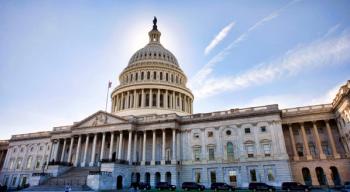
Growth Rate of U.S. Healthcare Expenditures Slows in 2021 as Federal Government Pulled Back From COVID-19 Spending
Spending climbed by 2.7% in 2021. In 2020, it soared by 10.3%, fueled by federal government spending in response to the pandemic. The blizzard of calculations of 2021 healthcare spending by CMS’ actuaries also provides further evidence that utilization of healthcare services bounced back in 2021.
After jumping up in 2020 as the federal government pumped money into the healthcare sector to help it weather the early days of the COVID-19 pandemic, overall healthcare expenditures eased back in 2021 even as utilization of healthcare services increased, according to CMS actuaries.
Healthcare spending in the U.S grew by 2.7% in 2021 compared with a notable uptick of 10.3% in 2020, according to a new analysis from the Office of the Actuary at CMS, which was
The CMS actuaries’ figures also show healthcare expenditures as a percentage of gross domestic product (GDP) retreating from a high of 19.7% in 2020 to 18.3% in 2021 as federal government spending decreased. Still, as a proportion of GDP, the 2021 exceeds the proportions for 2015 through 2019, which hovered around 17.5%.
Healthcare spending in absolute figures was $4.255 trillion in 2021, which works out to $12,914 per capita, according to the actuaries. Spending in 2020 surpassed the $4 trillion mark for the first time, reaching $4, 144 trillion, and the per capita figure for that year was $12, 591.
The overarching message of the actuaries’ numerous tallies was federal spending declining from 2020 peaks as spending by other payers (called “sponsors” in the Health Affairs paper) edged up as utilization of healthcare services started to return to prepandemic levels in 2021. For example, healthcare spending by private businesses increased by 6.5% in 2021 after decreasing by 2.9% in 2020. About 75% of that spending was on contributions to employer-sponsored health insurance premiums, which the actuaries said increased by 6.5% in 2021 after a decline of 3% in 2020.
Meanwhile, spending on “public health activity” — a category that included money Provider Relief Fund and the Paycheck Protection Program — decreased from $135.8 billion in 2020 to $78.8 billion in 2021, a steep 41% decrease. In 2019, federal spending on public health activity was $13.3 billion, so there was a tenfold jump from 2019 to 2020.
Still, the federal government, all told, is the biggest spender on healthcare, accounting for 34% of the total in 2021 ($1.457 trillion of the $4.255 trillion total). That was less than the federal government’s 36% share in 2020 and in absolute dollars, federal government spending on healthcare decreased by $53 billion.
Several of the calculations show increased utilization in 2021 and the much-reported bounce back from 2020 when lockdowns and a reluctance to go to healthcare led to a massive decline in the use of healthcare services. For example, per capital spending on personal healthcare — a category that excludes government administration, public health activity and several other expenditure categories, increased by 9.6%in 2021 after inching up only 0.1% in 2020. When the actuaries removed prices increases from that spending figure, their figures show a 7.4 increase in “nonprice factors,” compared with a decrease of 1.9% in 2020. Most of those nonprice factors can be attributed to increase use of healthcare services or increased intensity of the healthcare services.
Newsletter
Get the latest industry news, event updates, and more from Managed healthcare Executive.





















































